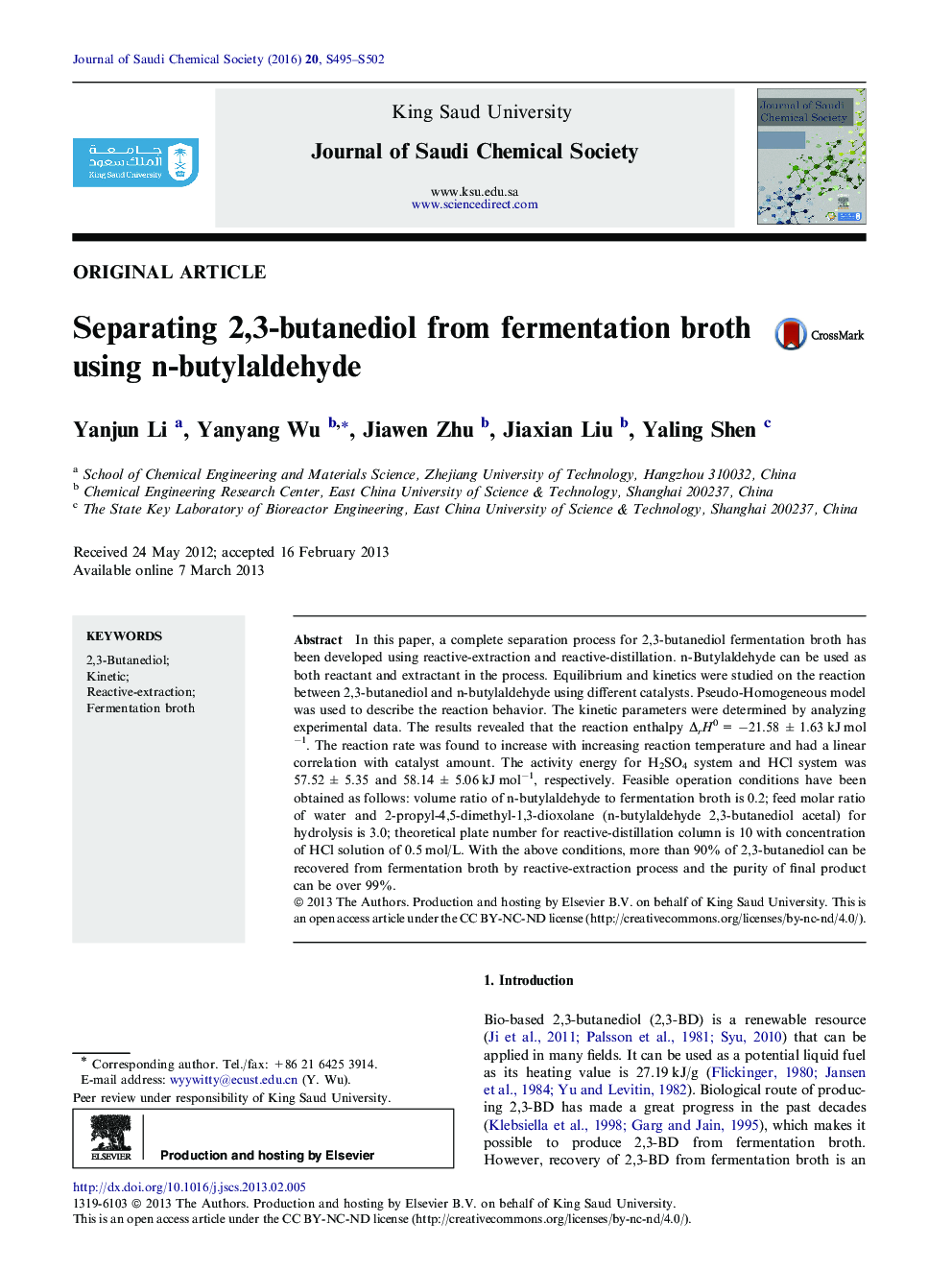| Article ID | Journal | Published Year | Pages | File Type |
|---|---|---|---|---|
| 4909540 | Journal of Saudi Chemical Society | 2016 | 8 Pages |
In this paper, a complete separation process for 2,3-butanediol fermentation broth has been developed using reactive-extraction and reactive-distillation. n-Butylaldehyde can be used as both reactant and extractant in the process. Equilibrium and kinetics were studied on the reaction between 2,3-butanediol and n-butylaldehyde using different catalysts. Pseudo-Homogeneous model was used to describe the reaction behavior. The kinetic parameters were determined by analyzing experimental data. The results revealed that the reaction enthalpy ÎrH0 = â21.58 ± 1.63 kJ molâ1. The reaction rate was found to increase with increasing reaction temperature and had a linear correlation with catalyst amount. The activity energy for H2SO4 system and HCl system was 57.52 ± 5.35 and 58.14 ± 5.06 kJ molâ1, respectively. Feasible operation conditions have been obtained as follows: volume ratio of n-butylaldehyde to fermentation broth is 0.2; feed molar ratio of water and 2-propyl-4,5-dimethyl-1,3-dioxolane (n-butylaldehyde 2,3-butanediol acetal) for hydrolysis is 3.0; theoretical plate number for reactive-distillation column is 10 with concentration of HCl solution of 0.5 mol/L. With the above conditions, more than 90% of 2,3-butanediol can be recovered from fermentation broth by reactive-extraction process and the purity of final product can be over 99%.
